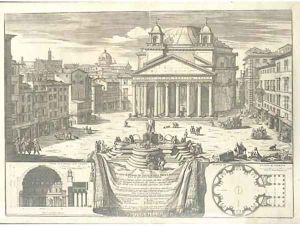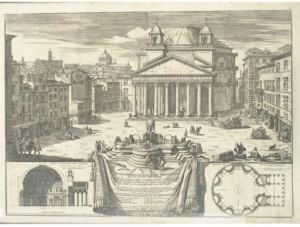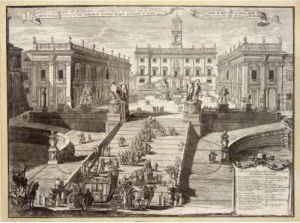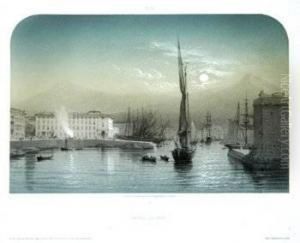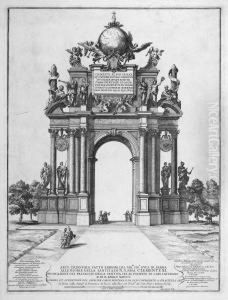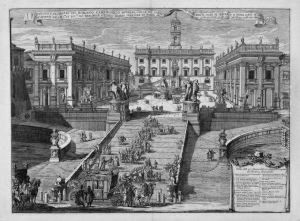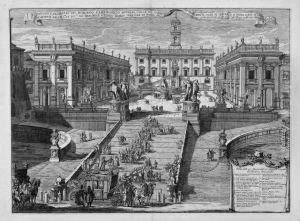Alessandro Specchi Paintings
Alessandro Specchi was an Italian architect and engraver, born in 1668 in Rome during the late Baroque period. He is considered part of the Roman Baroque movement and was known for his architectural designs, which often reflected the grandeur and dramatic style characteristic of the period.
Specchi trained under Carlo Fontana, a prominent Baroque architect of the time, and he also studied the works of Gian Lorenzo Bernini and Francesco Borromini, whose influence can be seen in his architectural designs. Specchi's career was largely based in Rome, where he contributed significantly to the city's urban landscape.
One of his most famous works is the Porto di Ripetta, the river port on the Tiber in Rome, which was an important feat of urban planning and civil engineering of his time. Unfortunately, the port no longer exists as it was destroyed in the late 19th century during the construction of the Tiber embankments. His other notable works include the design of the staircase in the Palazzo Barberini and the layout of the Piazza di Spagna, which is one of Rome's most famous squares.
In addition to his architectural work, Specchi was also a skilled engraver and his prints helped to disseminate the Roman Baroque style throughout Europe. His engravings depict various architectural views and details of Rome, serving as important documents of the city's Baroque architecture during his lifetime.
Alessandro Specchi died in 1729 in Rome. His contributions have left a lasting impact on the city's architecture, and he is remembered as a significant figure in the development of Roman Baroque style.
